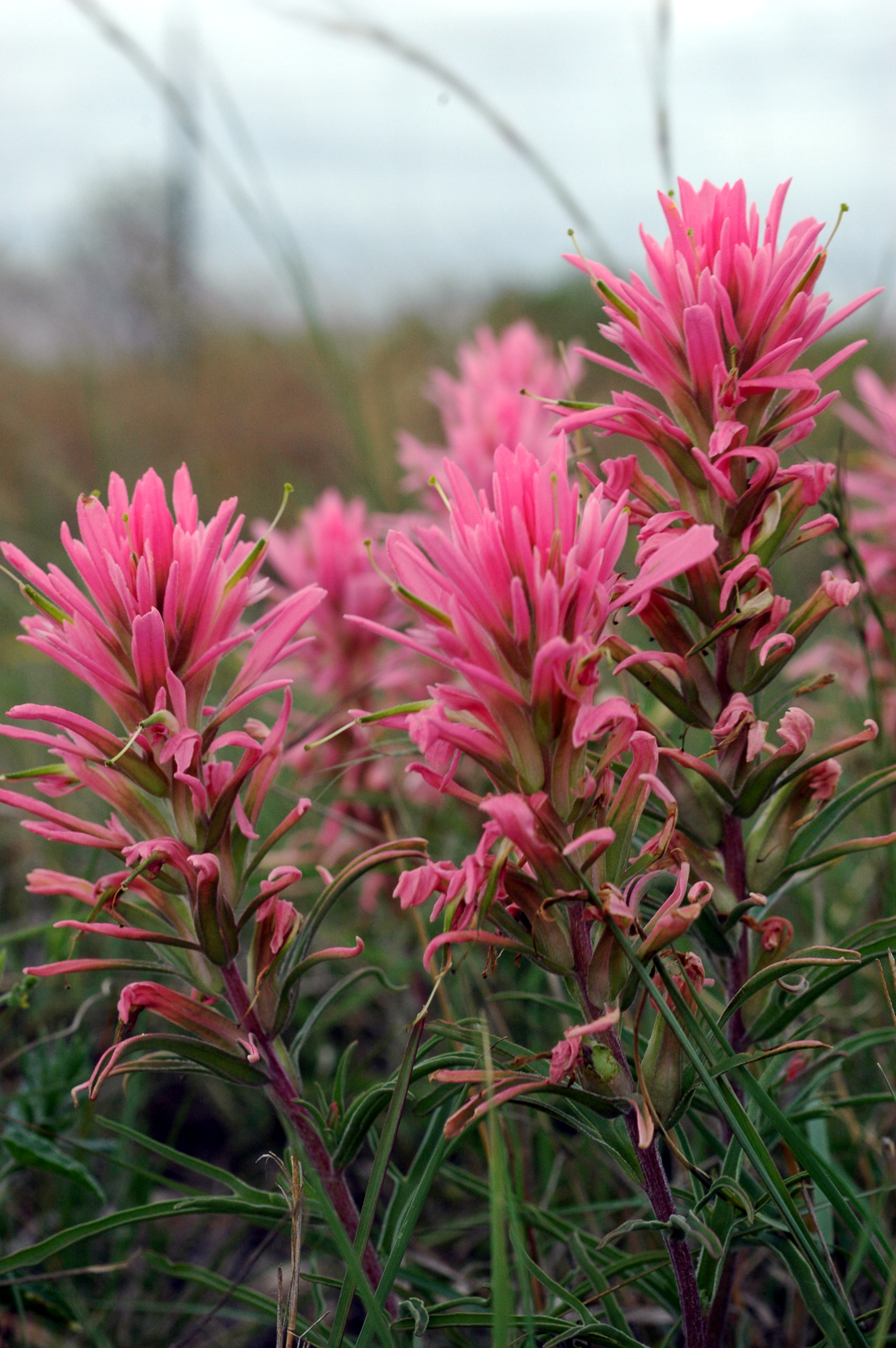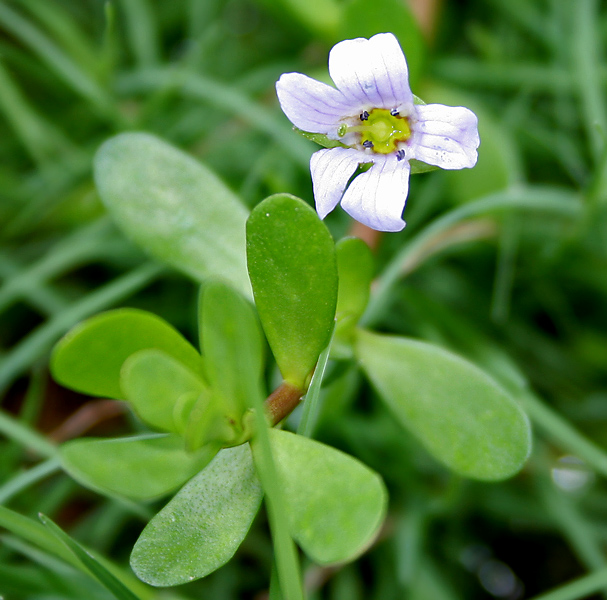|
Triaenophora
''Triaenophora'' is a genus of flowering plants native to Temperate Asia. Molecular phylogenetic studies place it in the tribe Rehmannieae of the family Orobanchaceae, although , Plants of the World Online continued to place it in Plantaginaceae. Taxonomy The genus ''Triaenophora'' was first erected by Hans Solereder in 1909, based on a section of the genus ''Rehmannia'' which Joseph Dalton Hooker had called "''Trianophora''" in 1891. It was initially placed in the family Scrophulariaceae. When that family was shown by molecular phylogenetic studies not to be monophyletic, and so was split up, ''Triaenophora'' was placed in Plantaginaceae, a placement still used by Plants of the World Online . Subsequent studies have shown that ''Triaenophora'' forms a clade with ''Rehmannia'', basal to parasitic genera in the family Orobanchaceae. The placement in the tribe Rehmannieae of the family Orobanchaceae was accepted by the Angiosperm Phylogeny Website The Angiosperm Phylogeny Websi ... [...More Info...] [...Related Items...] OR: [Wikipedia] [Google] [Baidu] |
Rehmannieae
Orobanchaceae, the broomrapes, is a family of mostly parasitic plants of the order Lamiales, with about 90 genera and more than 2000 species. Many of these genera (e.g., '' Pedicularis'', ''Rhinanthus'', ''Striga'') were formerly included in the family Scrophulariaceae ''sensu lato''. With its new circumscription, Orobanchaceae forms a distinct, monophyletic family. From a phylogenetic perspective, it is defined as the largest crown clade containing '' Orobanche major'' and relatives, but neither ''Paulownia tomentosa'' nor '' Phryma leptostachya'' nor '' Mazus japonicus''. The Orobanchaceae are annual herbs or perennial herbs or shrubs, and most (all except '' Lindenbergia'', '' Rehmannia'' and '' Triaenophora'') are parasitic on the roots of other plants—either holoparasitic or hemiparasitic (fully or partly parasitic). The holoparasitic species lack chlorophyll and therefore cannot perform photosynthesis. Description Orobanchaceae is the largest of the 20–28 dico ... [...More Info...] [...Related Items...] OR: [Wikipedia] [Google] [Baidu] |
Orobanchaceae
Orobanchaceae, the broomrapes, is a family (biology), family of mostly parasitic plants of the order (biology), order Lamiales, with about 90 genus, genera and more than 2000 species. Many of these genera (e.g., ''Pedicularis'', ''Rhinanthus'', ''Striga'') were formerly included in the family Scrophulariaceae ''sensu lato''. With its new circumscription, Orobanchaceae forms a distinct, monophyletic family. From a phylogenetic perspective, it is defined as the largest crown clade containing ''Orobanche major'' and relatives, but neither ''Paulownia tomentosa'' nor ''Phryma leptostachya'' nor ''Mazus japonicus''. The Orobanchaceae are annual plant, annual herbaceous plant, herbs or perennial plant, perennial herbs or shrubs, and most (all except ''Lindenbergia'', ''Rehmannia'' and ''Triaenophora'') are parasitic plant, parasitic on the roots of other plants—either holoparasitic or hemiparasitic (fully or partly parasitic). The holoparasitic species lack chlorophyll and therefore ... [...More Info...] [...Related Items...] OR: [Wikipedia] [Google] [Baidu] |
Rehmannia
''Rehmannia'' is a genus of seven species of flowering plants in the order Lamiales and family Orobanchaceae, which is native to China and Japan. It has been placed as the only member of the monotypic tribe Rehmannieae, but molecular phylogenetic studies suggest that it forms a clade with '' Triaenophora''. Contrary to the vast majority of the taxa of Orobanchaceae, ''Rehmannia'' is not parasitic. Systematics Etymology ''Rehmannia'' is named for Joseph Rehmann (1788–1831), a physician who worked in St. Petersburg.Gledhill, David (2008). "The Names of Plants". Cambridge University Press. (hardback), (paperback). pp 328 Homonymy The name "Rehmannia" has also been given to a genus of Jurassic ammonites of the family Reineckeidae. Classification The genus was included in the family Scrophulariaceae The Scrophulariaceae are a family of flowering plants, commonly known as the figwort family. The plants are annual and perennial herbs, as well as shrubs. Flowers have bilateral ... [...More Info...] [...Related Items...] OR: [Wikipedia] [Google] [Baidu] |
Lindenbergia
''Lindenbergia'' is a genus of herbaceous plants in the order Lamiales and in the broomrape family Orobanchaceae. It is one of the few genera of the family which are not parasitic. It contains about 15 species found from northeast Africa across Asia to the Philippines, and is most abundant in India. Taxonomy The genus ''Lindenbergia'' was erected by Johann Lehmann in 1829. It is named in honor of Johann Bernhard Wilhelm Lindenberg, a lawyer and bryologist from Germany. ''Lindenbergia'' was originally placed in the family Scrophulariaceae. Molecular phylogenetic studies have caused that family to be split up, with many genera, including ''Lindenbergia'', placed in a greatly expanded family Orobanchaceae. ''Lindenbergia'' has been placed in the tribe Lindenbergieae,Stevens, P.F. (2001 onwards)"Orobanchaceae" ''Angiosperm Phylogeny Website''. Retrieved 2022-03-21. one of two basal clades in the family Orobanchaceae that are not parasitic: Species , Plants of the World Online ... [...More Info...] [...Related Items...] OR: [Wikipedia] [Google] [Baidu] |
Plantaginaceae
Plantaginaceae, the plantain family or veronica family, is a large, diverse family (biology), family of flowering plants in the order Lamiales that includes common flowers such as Antirrhinum, snapdragon and Digitalis, foxglove. It is unrelated to the true plantains, banana-like fruit also called "plantain". In older classifications, Plantaginaceae was the only family of the order Plantaginales, but numerous phylogenetic studies, summarized by the Angiosperm Phylogeny Group, have demonstrated that this taxon should be included within Lamiales. Overview The plantain family as traditionally circumscribed consisted of only three genera: ''Bougueria'', ''Littorella'', and ''Plantago''. However phylogenetic research has indicated that Plantaginaceae ''sensu stricto'' (in the strict sense) were nested within Scrophulariaceae (but forming a group that did not include the type genus of that family, ''Scrophularia''). Although Veronicaceae (1782) is the oldest family name for this group, ... [...More Info...] [...Related Items...] OR: [Wikipedia] [Google] [Baidu] |
Flowering Plant
Flowering plants are plants that bear flowers and fruits, and form the clade Angiospermae (). The term angiosperm is derived from the Ancient Greek, Greek words (; 'container, vessel') and (; 'seed'), meaning that the seeds are enclosed within a fruit. The group was formerly called Magnoliophyta. Angiosperms are by far the most diverse group of Embryophyte, land plants with 64 Order (biology), orders, 416 Family (biology), families, approximately 13,000 known Genus, genera and 300,000 known species. They include all forbs (flowering plants without a woody Plant stem, stem), grasses and grass-like plants, a vast majority of broad-leaved trees, shrubs and vines, and most aquatic plants. Angiosperms are distinguished from the other major seed plant clade, the gymnosperms, by having flowers, xylem consisting of vessel elements instead of tracheids, endosperm within their seeds, and fruits that completely envelop the seeds. The ancestors of flowering plants diverged from the commo ... [...More Info...] [...Related Items...] OR: [Wikipedia] [Google] [Baidu] |
Royal Botanic Gardens, Kew
Royal Botanic Gardens, Kew is a non-departmental public body in the United Kingdom sponsored by the Department for Environment, Food and Rural Affairs. An internationally important botanical research and education institution, it employs 1,100 staff. Its board of trustees is chaired by Dame Amelia Fawcett. The organisation manages botanic gardens at Kew in Richmond upon Thames in south-west London, and at Wakehurst, a National Trust property in Sussex which is home to the internationally important Millennium Seed Bank, whose scientists work with partner organisations in more than 95 countries. Kew, jointly with the Forestry Commission, founded Bedgebury National Pinetum in Kent in 1923, specialising in growing conifers. In 1994, the Castle Howard Arboretum Trust, which runs the Yorkshire Arboretum, was formed as a partnership between Kew and the Castle Howard Estate. In 2019, the organisation had 2,316,699 public visitors at Kew, and 312,813 at Wakehurst. Its site ... [...More Info...] [...Related Items...] OR: [Wikipedia] [Google] [Baidu] |
International Plant Names Index
The International Plant Names Index (IPNI) describes itself as "a database of the names and associated basic bibliographical details of seed plants, ferns and lycophytes." Coverage of plant names is best at the rank of species and genus. It includes basic bibliographical details associated with the names. Its goals include eliminating the need for repeated reference to primary sources for basic bibliographic information about plant names. The IPNI also maintains a list of standardized Author citation (botany), author abbreviations. These were initially based on Authors of Plant Names, Brummitt & Powell (1992), but new names and abbreviations are continually added. Description IPNI is the product of a collaboration between The Royal Botanic Gardens, Kew (Index Kewensis), The Harvard University Herbaria (Gray Herbarium Index), and the Australian National Herbarium (Australian Plant Name Index, APNI). The IPNI database is a collection of the names registered by the three cooperating ... [...More Info...] [...Related Items...] OR: [Wikipedia] [Google] [Baidu] |



